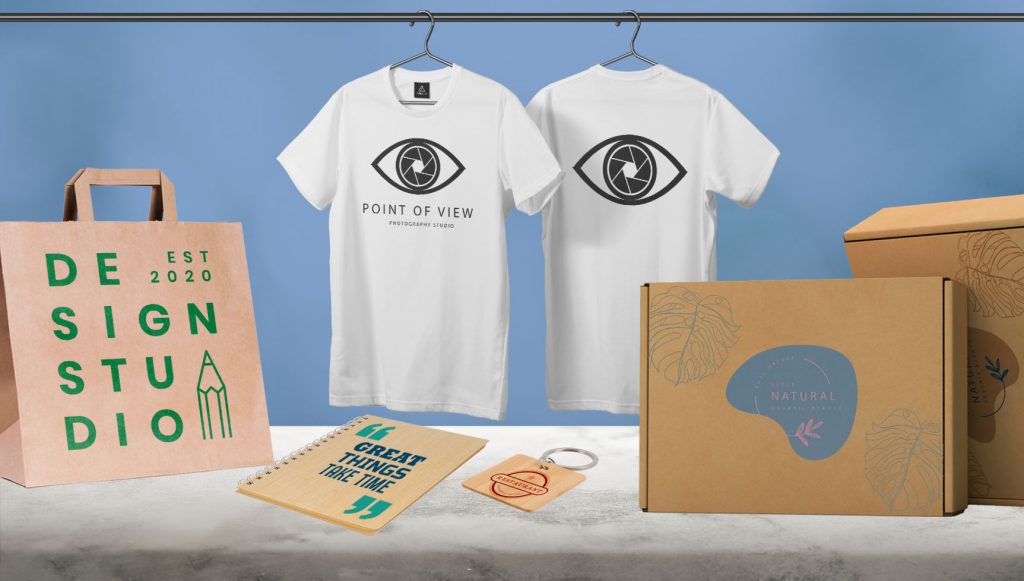
Screen Printing: First Steps For Beginners
Screen Printing: First Steps For Beginners

Screen printing is very popular because of its results, and above all, because it is a handcrafted process. This process is now considered art, but you need to follow some screen printing steps.
If you’re interested in getting started with this popular technique, make sure to read through all of the screen printing steps that we’ll go over in this post. We will explain everything you need to know and the materials you’ll need for textiles and objects.
History of screen printing
Screen printing is an entirely handmade process because it requires using one’s hands to mix inks, pass them through the mesh, mount the screen, etc.
Screen printing originated in ancient China, where women’s hair was pasted on paper to form drawings. It is, therefore, an ancient technique. The material used for personalisation was then changed to silk.
Are you interested in screen printing T-shirts or other products with this technique? Then pay attention to the following points.


The screen printing process step by step
To get into the world of screen printing, you need to know all the processes involved in this traditional technique. The first thing to do is prepare the transparency film and the screens with the design you want to print.
Another feature is that you need a different screen for each colour; thus, the more colour you want, the more time you’ll have to invest in screen preparation and printing.
It is a very manual process in which you must follow the screen printing steps that we briefly discuss below:
Prepare the transparency film
The first screen printing step you must do is prepare the transparency film. You will first print the design in black and use it when exposing the emulsion to create a stencil of the design on the screen.
The main function of the transparency film is to hide the print from the UV light, which won’t dry and will leave what we would call “pores” in the screens, which remain open for the ink to pass through and the design to be printed.
Coat the screen
The second step in screen printing is to coat the screen with photo emulsion, i.e. Prepare the screen with the design you want, like a stencil. This process involves a photosensitive chemical (the emulsion) and a light beam.
When coating the screen, you must apply the emulsion both on the front and the back. When using diazo photo emulsion we recommend letting it dry for approximately 15 minutes.
This should be done in a dark room with red light, like the ones used for film developing, because the emulsion is light-sensitive. If lights were to hit it, the screen wouldn’t be coated properly, which would affect the final result.
Expose the screen
After coating the screen, it’s time to expose it to get the design we want to print. This is how we transfer the stencil to the screen.
This step is necessary for screen printing to expose the previously-coated screen under UV light, alongside the transparency film printed with the design we want to print.
After 5-10 minutes, you should wash the stencil with a power washer to remove the remaining emulsion. This will remove the areas related to the design so that the ink can pass through like with a stencil.

It’s important that you know that if your design has more than one colour, you’ll need to make a screen printing screen for each colour. Prepare the transparency film and the product you want to personalise, the screens, the inks and start printing.
Now that you know the steps you need to follow before printing, it’s time to apply the ink, which will require a squeegee. This tool will help you move the inks from top to bottom so they can pass through the screen.
After screen printing your design, let the inks dry so that they can impregnate the substrate properly and... That’s it! You’ve completed all the screen printing steps! Now repeat this process with the rest of the designs, and you will become an expert in no time!


Screen printing materials
Now that you know about the screen printing steps that you need to follow, you’ll probably wonder about the materials you need for screen printing. That’s why we’re now going to talk about the most important tools and materials.
Transparency film
Your design should first be printed on a polyester film called a transparency film. On this product, the design must be printed in black and will be used for the exposure of the screen to create a “stencil” of the design to be printed.
Screen printing frame
The screen printing frame, also known as screen printing screen when attached to a stretched mesh, can be of three types: aluminium, wood, and steel.
Because the frames are frequently exposed to water, aluminium is the most recommended material for working with screen printing. The problem with wood is that it expands and shrinks; and that steel rusts.
You should also consider the size you need to print to know which frame to use. The most common sizes for amateurs and small professionals are 30 x 40 cm and 40 x 50 cm.


Screen printing mesh
Screen printing mesh is stretched on the frame, and it’s the substrate that we will coat with photo emulsion and through which the inks will pass.
First, you must consider the different types of screen printing mesh available because they are measured by the number of threads per square centimetre. The most common ones are 43T and 90T meshes. Still, you’ll have to know how to choose the right mesh depending on the substrate where you’ll be applying your design, ink density, and the definition you’re looking for.
The higher the mesh count, the higher the resolution, but the more difficult it will be for the ink to pass through. That’s why it is not recommended to use high-density inks such as Plastisol with meshes with a high mesh count.
Also, as a general rule, we recommend using higher mesh counts on rigid items, and lower mesh counts for screen printing on fabrics.
Photo emulsion
For this step, you will need photo emulsion for screen printing. The choice for this material will depend a lot on the mesh you are using, the substrate and, above all, the ink.
Apart from the emulsion, you will need an emulsion scoop coater to spread the emulsion on the screen. It’s a rectangular container with a straight edge that helps you dose the product and apply it evenly on the screen.
Exposure unit
The exposure unit is a necessary tool in screen printing and is used specifically when exposing your screens. We could compare the exposure unit and its process to a photocopier as its main function is to copy images.
This tool illuminates the transparency film when it comes into contact with the ultraviolet LED light and copies the design onto the mesh.
Screen printing inks
To get into screen printing, we must choose the type of screen printing inks that we will work with. There are two types you can start with: water-based and solvent-based.
Water-based screen printing ink is made without any harmful chemicals and is the most environmentally friendly. They are perfect for fabrics, as they are fully integrated into the garment. On the other hand, there are two types of water-based inks, low solids and high solids.
High solids are suitable for dark fabrics as they have a thicker body and better opacity. On the other hand, low solids are clear and must be used on lighter garments to get better results.
Apart from water-based inks, some solvent-based inks, such as Plastisol, are thicker and don't dry without heat. This is why you need drying equipment such as tunnel dryers to work with these screen printing inks. Plastisol’s main characteristics are their versatility for the substrates on which they can be applied and their high definition.


Squeegee
You will need a screen printing squeegee to help you print your design. With this tool, you will have to move the ink up and down to transfer the inks onto the product.
It has a wooden or aluminium handle and holds flexible rubber which can be of different hardnesses and tips. The most commonly used screen printing squeegees are Shore 65A and 75A with a square cut.

You already know about the main aspects and the steps for screen printing to get started with this technique. If you want to know more and go deeper into the subject, keep an eye on our Blog because we will soon be adding new content.
If you have any doubts about screen printing and its products, you can contact our Customer Service department that will help you with whatever you need.
See you soon!
-
This blog really breaks down screen printing into simple steps! I'm curious, though, about the types of ink that work best for beginners. Also, it mentions a squeegee - where can I find one? Overall, great intro for someone like me who's just starting out in screen printing!
-
Thank you so much for sharing the useful information.
WE WANT TO KNOW WHAT YOU THINK



You may also like